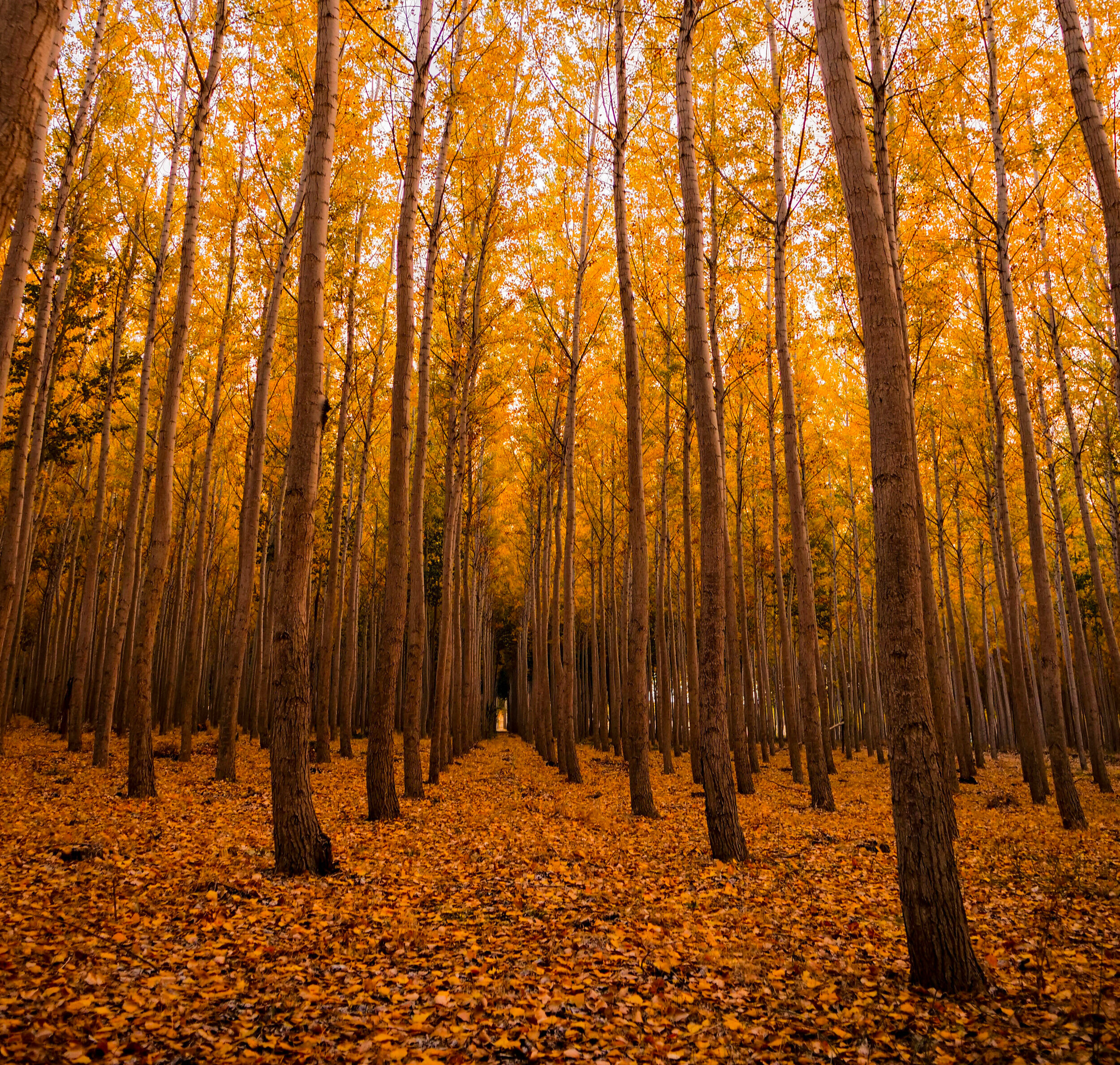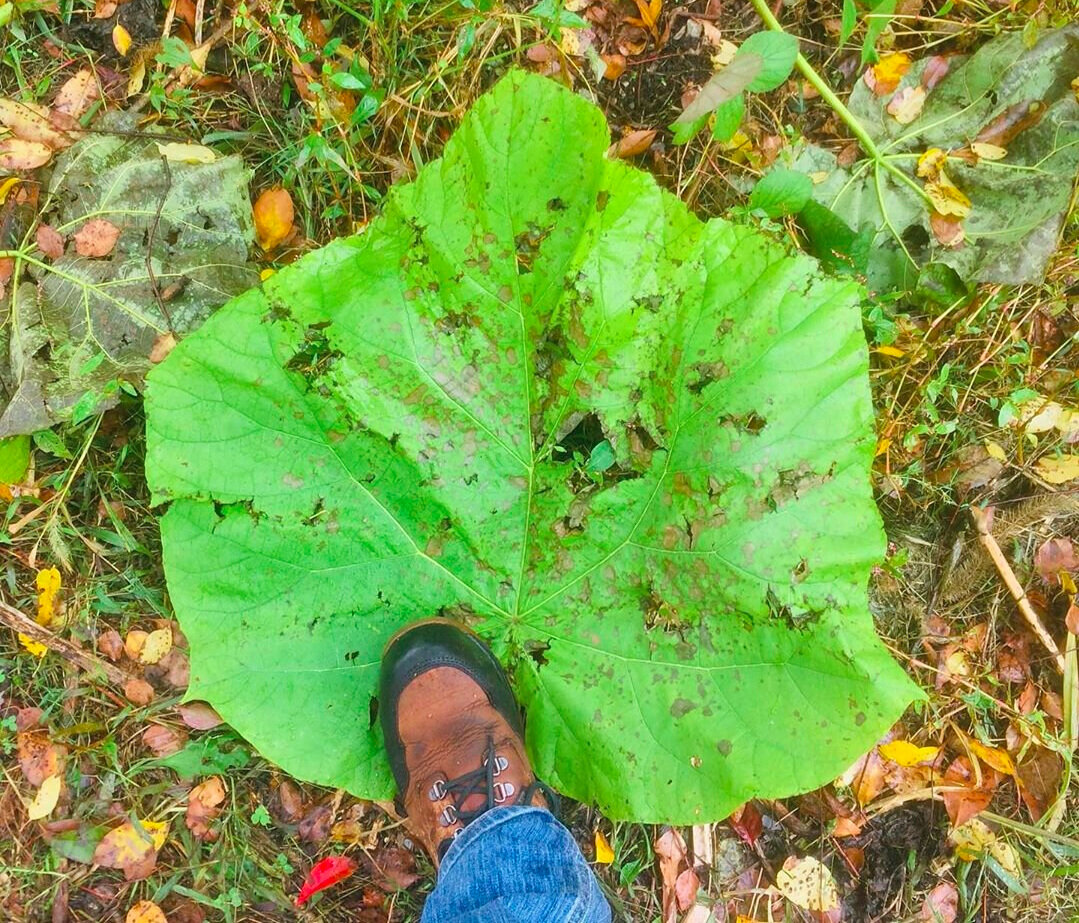The Fastest Growing Trees in the Northeast
“What is the fastest growing tree I can plant?” is a question that almost every gardener asks at some point. In our region, there are just a handful of contenders. These are trees that can grow 10 to 20 feet in a single year, reaching 80-100 feet high in under a decade. There have been many fads and get-rich-quick schemes built around them for decades, but at the end of the day there is no denying their sheer growing power. And while it is amazing to hear about these trees, it is quite an experience to actually see them in action.
On a rainy Sunday afternoon, we made our way to a small backyard nursery in the suburbs of Philadelphia. Frank Gomez is one of the most unique nurserymen we’ve ever met. He specializes in the fastest growing trees that can thrive in our climate, and his website is a fascinating resource and proof of the power of these trees.
As much as we try to develop new technologies to address the world’s problems, trees often turn out to be the most efficient solution for some of the most persistent issues around us. Strategic tree plantings can be the best tools we have for cleaning up pollution, sequestering carbon, cooling the planet, increasing biodiversity, decreasing fossil fuel use, and limiting unsustainable imports from across the globe - oftentimes all at once. But not every tree fits the bill for these applications. Only species that can grow a huge amount of biomass (i.e. wood) and thrive in suboptimal conditions are suitable for this kind of biological heavy lifting. Frank has honed in on the three best types of trees for this work: willows (Salix), poplars (Populus), and empress trees (Paulownia).
Fast growing trees like cottonwood and hybrid poplar are often used in broadscale plantations like this one in Oregon
Poplar and willow are among the best plants for capturing heavy metals and toxins in polluted soils - even soaking up sewage and wastewater. They can degrade persistent toxins associated with petroleum, like benzene and toluene, as well as herbicides like atrazine. They sequester atmospheric carbon very quickly with their exceptional growth, and can be converted into biochar (nearly permanent carbon sequestration that promotes soil fertility), firewood, furniture, medicine, baskets and crafts (willow), or logs for mushroom production (poplar).
What’s more, while poplars and willows are not traditional nitrogen-fixers, they contain specialized endophytic fungi in their leaves which fix atmospheric nitrogen and allow the trees to maintain their rapid growth. In this way, they are also an excellent living “chop-and-drop” mulch for agroforestry projects, and a valuable coppice fodder plant for silvopasture settings. Willow fodder has been found to increase reproductive rates and act as an anthelmintic (dewormer) for sheep as well. Indeed, the wide applications of coppiced willow are very promising, garnering increasing attention and work from universities. Poplar is, too, is increasingly used in livestock operations - although primarily as a timber crop.
Poplar alley cropping with wheat in France. Photo source (courtesy of Christian Dupraz)
Poplars are used extensively in plantations and projects around the globe - both for bioremediation of damaged or polluted soils, and for timber and biomass production. Hybrid poplars especially have gained notoriety in the past few decades, and Frank has experimented with a variety of different cultivars. He has found one in particular that is best suited for our Mid-Atlantic / Northeastern climate: the opaquely named “OP-367.” This hybrid was bred nearly a century ago in New York, and is a cross of the native eastern cottonwood (Populus deltoides) with the European black poplar (Populus nigra). Growing an astonishing 10+ feet every year in its youth, it can reach a stately 80 feet within a decade, given the right conditions.
A hybrid poplar in Southeast Pennsylvania after only four seasons of growth. Click here for more photos.
While hybrid poplars like OP-367 are widely used in plantations, there are also selections of eastern cottonwood that have similar growth rates and host even more biodiversity due to being a straight native species. Although no monoculture plantation is beneficial, on a small scale a cottonwood grove would be far better than any other equivalent fast-growing timber in terms of supporting biodiversity. Native poplars and aspens host over 365 species of moths and butterflies. They can be used to create a stand of dense shade in under 5 years, under which shade-tolerant native plants (pawpaw, beech, hemlock, buckeye, ginseng, etc.) can be planted. This would exclude the majority of sun-loving invasive weeds that plague most reforestation work, and significantly reduce or eliminate the need for herbicide application.



Frank Gomez takes 6-10 ft cuttings of 1st-year wood from his hybrid poplars, lays them down, and buries them an inch or so beneath the ground. In the spring, they sprout along the stems and push up a number of new saplings. These can be divided or used as stool beds to continue coppice harvest. Now a few years in, his stool beds are pushing up 10-16 feet of growth every year - ever increasing, too, as the roots grow deeper and wider.
Empress trees (Paulownia) have some of these same qualities, but also present other opportunities and challenges. A unique C4 tree, Paulownias sequester carbon dioxide at the same rate as fast-growing grasses like maize and sorghum, meaning they pull CO2 out of the air faster than any other woody plant in the world. As a result, Paulownia trees have explosive growth rates. The two varieties that Frank Gomez grows can attain 10 to 20 feet of growth each year. Below you can see the same tree with 1 season of growth in May 2019 (left), compared with 2 seasons of growth in October of 2019 (right).
Empress trees have been shown to be useful plants for bioremediation in a variety of circumstances, but their main value is in their unique timber. In the words of one grower, Paulownia wood is “1/3 the weight as pine, hard as hickory. It doesn’t shrink or swell, doesn’t need curing.” It is often called the “other Balsa,” and can be used in the same applications where incredibly lightweight wood is required (it even has a higher strength-to-weight ratio!). It can be easily carved, holds nails and screws without splitting, and can notably be worked without curing as it doesn’t warp or change shape while drying. It is one of the best woods available for making everything from surfboards and kayaks to boxes. It also holds a very special place in Japanese culture, where a Paulownia tree was traditionally planted at the birth of a daughter, in order to be harvested for her wedding to pay for dowry (or buy a new car).
A log of Paulownia elongata grown in Frank Gomez’s yard. At seven years old, it reached nearly a foot in diameter, and after cutting it has sat on wet ground with barely any signs of rot or fungal growth for 3 years.
Others are looking into ways that Paulownia leaves can be used to make green manure/fertilizer. A single 8 to 10-year-old tree can make as much as 200 pounds of green leaves every year, which can be used to fertilize gardens, farms, and agroforestry systems.
Paulownia leaves can reach truly enormous sizes - far larger than any other temperate tree species. These leaves can be used as green mulch or manure.
The issue with Paulownia, however, is that one of its species - Paulownia tomentosa - is a known invasive that can be a major issue in urbanized areas. Germinating in sterile soil, which is abundant in the backyards and alleyways that contain compacted fill soil from construction, it grows rapidly and can burst apart foundations and walls. In essence, it has an incredible aptitude for destroying the built environment, and oftentimes plagues the neighborhoods with the fewest resources to control it. We cannot advocate planting the known invasive Paulownia tomentosa. Even if properly cared for, it is only a matter of time before it goes to seed and enters your local ecosystem - potentially with dire results for native flora and fauna.
Fortunately, at Frank Gomez’s nursery, he does not have the known invasive species (P. tomentosa) but instead grows two other incredibly fast-growing varieties - Shantong (a hybrid of P. tomentosa and P. fortunei) and Paulownia elongata. These two trees have not yet been found to be invasive, and while it is vital to keep it that way, for the time being they appear to be safe to plant. Should they prove otherwise, we will remove them from our farm. The key here is “control” - coppicing, harvesting, and ultimately removing the tree if a grower is no longer able to look after it. Planting potentially invasive trees can be a powerful tool in limited circumstances - but it needs to be wielded responsibly.
A plantation of Paulownia fortunei in Australia. Photo source.
It would be unwise to advocate for large-scale monoculture plantations of any single species - particularly hybrids or non-native trees that support little, if any, biodiversity. But on a small scale, and integrated with a wide range of other species, fast-growing trees like poplars, willows, and non-invasive varieties of empress tree can be powerful tools for any small grower. Strategically planted and carefully managed, they can put on incredible growth every year and yield a wide range of uses, including:
Timber and firewood
Basketry & woodland crafts
Mulch
Mushroom logs (particularly oyster and shiitake)
Shade for livestock and forest restoration
Biochar and charcoal for artists
On our own farm we are planting two Shantong Paulownia trees for green mulch and trellising, poplars for grape arbors, and willows for basketry and living structures. Frank Gomez offers a wide range of fast growing trees through his nursery, and willows can be obtained from a number of good growers in the United States - particularly Vermont Willow Nursery.








